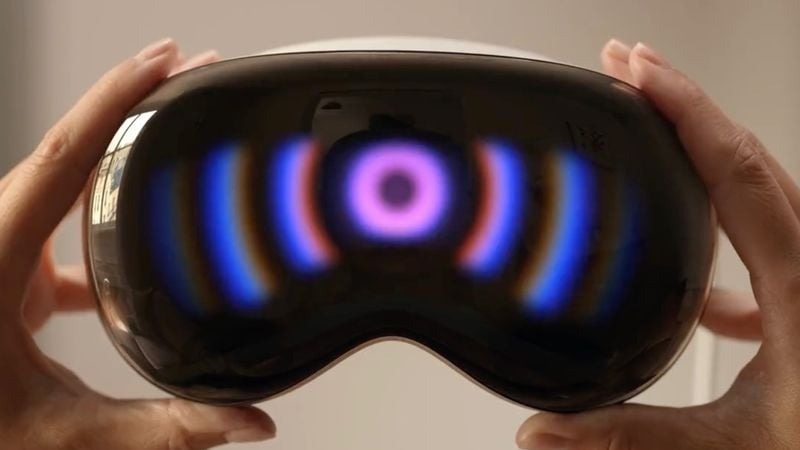The unveiling of Apple’s first consumer-targeted mixed reality headset, dubbed Vision Pro, inaugurates a new computing paradigm poised to revolutionize everything from creative workflows to telepresence. But with a substantial price tag and first-generation limitations, is now the time for mainstream adoption?
This comprehensive guide examines Vision Pro through technical capabilities, ideal use case scenarios, competitive forces and market outlook to project the promise versus realities of Apple’s emerging mixed reality ecosystem.
Inside Vision Pro: A Technical Breakdown
As an inaugural developer-centric device, Apple imbued Vision Pro with bleeding edge specifications to drive next generation immersive experiences years ahead of rivals.
Breakthrough Visuals via Micro OLED Displays
Unique custom built Micro OLED displays unlock both stunning visual clarity and sleek industrial design through advantages like:
- Ultra high pixel density for seamless realism
- Extraordinarily compact footprint
- Curved contours hugging wearer field of view
With dual 4K panels yielding an effective 3000×2000 pixel input to each eye, Apple redefines rigorous expectations for virtual imagery.
Spatial Audio and Hand/Eye Tracking
Augmenting revolutionary optics, Vision Pro leverages integrated spatial audio, eye tracking and hand tracking to deepen immersion dramatically.
Notable examples include:
- Headlocked lifelike 3D sound
- Simulated eye contact between avatars and real people
- Intuitive hand gesture navigation through AR/VR environments
Both subtle and overt enhancements like these facilitate richer experiences.
Breakthrough Apple Silicon
Naturally, expertly engineered Apple silicon accelerates Vision Pro’s platform capabilities combining the mobility-optimized M2 processor with a custom AI/AR co-processor dubbed R1.
Together, performance feats include:
- Complex scene rendering with millions of polygons
- Over a dozen simultaneous high resolution visual streams
- Intelligent environment scanning, modeling and responding
Even as v1, this processor pairing unlocks functionality ahead of the present software curve.
Pricing in Context: A Workflow Investment
Carrying a formidable $3,499 price tag, Vision Pro models a premium pricing strategy – albeit not differently than past Apple category expansion devices, namely iPhone and Apple Watch.
But for enterprise and creative professionals, Vision Pro’s value might eclipse costs when quantified through tangible productivity gains across areas like:
- 3D and virtual set design and walkthroughs
- Data visualization dashboards
- Hybrid in-person/virtual team collaboration
- Rapid prototyping of architectural or industrial models
- Training simulations for medical, flight, disaster response scenarios
Still, developers must balance pricing against approachability facilitating growth.
The Competitive Landscape Takes Shape
As dominant hardware and software platforms jockey for leadership staking mixed reality territory, consumer and enterprise options continue bifurcating:
Meta Quest Pro
With a strong developer ecosystem and growing content library, Meta’s $1,500 Quest Pro leads across mass market consumer immersion like gaming and passive video.
Microsoft HoloLens
Matching enterprise sophistication over slick form factors, Microsoft’s HoloLens 2 remains the augmented front runner integrating natively with cloud services and 365 apps.
HTC Vive XR Elite
Positioned as the luxury choice stacking processing power and premium materials, HTC’s headset excels serving design and engineering roles most seamlessly.
Even as scrutiny focuses disproportionately on Apple, credible alternatives exist addressing distinct needs.
The Outlook for Vision Pro and Augmented Reality
Filtered through excessive hype cycles and botched product launches, skepticism regarding augmented and mixed reality perpetuates despite pockets of traction.
However, Vision Pro lays vital infrastructure for the towering 5G-fueled wave to follow. While outrageously priced for average consumers presently, Apple inaugurates an indispensable paradigm carrying mixed reality toward standard integration just as iPhones mainstreamed mobile computing nearly 15 years ago.
Through another decade iterating Experience Fidelity, Power Efficiency and Affordability (EPA), Apple stands poised to unlock mass adoption on its own trajectory and terms.
[Readers: Realistically, how far out do you think before mixed reality hardware like Vision Pro and software ecosystems surrounding it stand to gain mainstream consumer and business adoption? Please share your perspectives and forecasts!]









Add Comment